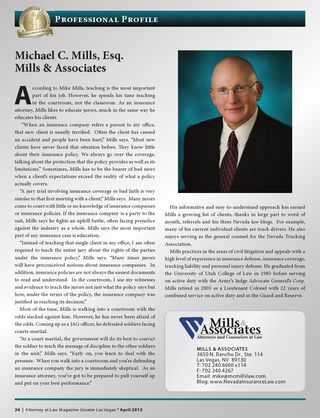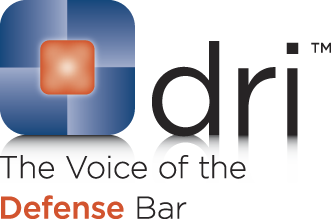Have you ever made a loss of use or downtime claim? Has anyone claimed that they lost the use of their vehicle because of your negligence? What is the duty of the vehicle’s owner to complete repairs on the damaged vehicle? Let’s delve into that issue by looking at the Nevada Supreme Court case of James Hardie Gypsum (Nevada), Inc. v. Inquipco, 112 Nev. 1397, 929 P.2d 903 (1996). The facts of this case are easy.
James Hardy Gypsum (JHG) rented a truck from Inquipco. The truck was damaged while one of JHG’s employee was operating it. JHG returned the equipment to Inquipco and told them of the damage. However, JHG said that the damage was caused by a defect in the truck and not because of anything its driver did.
Within a month after the accident, Inquipco had recovered the truck and placed it in its yard. Inquipco sat on the damaged vehicle for 16 months without making any repairs at all. Two months after the accident, JHG wrote to Inquipco telling Inquipco that it needed to repair the truck while continuing to assert that the truck was defective. JHG wrote the same letter three months after the accident as well. It wasn’t until nine moths after the accident that Inquipco got a settlement check from its insurance company and another seven months to complete the repair.
When it filed its suit, Inquipco thought that it should be paid for 16 months of loss of use. The Supreme Court disagreed. The court said:
“As a general rule, a party cannot recover damages for loss that he could have avoided by reasonable efforts.” Conner v. Southern Nevada Paving, Inc., 103 Nev. 353, 355, 741 P.2d 800, 801 (1987) (citation omitted). “[T]he rule den[ies] recovery for losses which could have been prevented by the . . . expenditures of plaintiff. . . .” Valencia v. Shell Oil Co., 147 P.2d 558, 561 (Cal. 1944). In order to recover loss of use damages, the plaintiff must “show diligence in getting the car repaired as early as reasonably possible.” Rownstein v. Bernhard & Turner Automobile Co., 180 N.W. 282, 284 (Iowa 1920). “[T]he trial court’s role, as trier of fact, is to determine the reasonable period of repair.” Airborn, Inc. v. Denver Air Center, Inc., 832 P.2d 1086, 1091 (Colo. Ct. App. 1992).
Inquipco argued that in light of the JHG’s allegations that a defect in the truck caused the accident it couldn’t complete repairs because the evidence had to be preserved. The Supreme Court said that that was not a good excuse. The court said Inquipco could have put JHG and the truck’s manufacturer on notice that it was going to repair the truck and given them an opportunity to inspect before the repairs were done. The Supreme Court sent the case back to the trial court and asked them to conduct a hearing to determine how many months it should reasonably have taken to repair the truck and cut off the loss of use damages on that date.
The lesson learned is that you can’t just sit back believing that you are in the right and not mitigate a claim for loss of use. This same principal of acting reasonably would also apply to downtime claims. For more information on downtime loss calculations, see HERE. Mills & Associates has coordinated and participated in a number of inspections just like the one that the Nevada Supreme Court described. Give us a call if you think you need a hand with a question like this.
 Follow
Follow Email
Email


